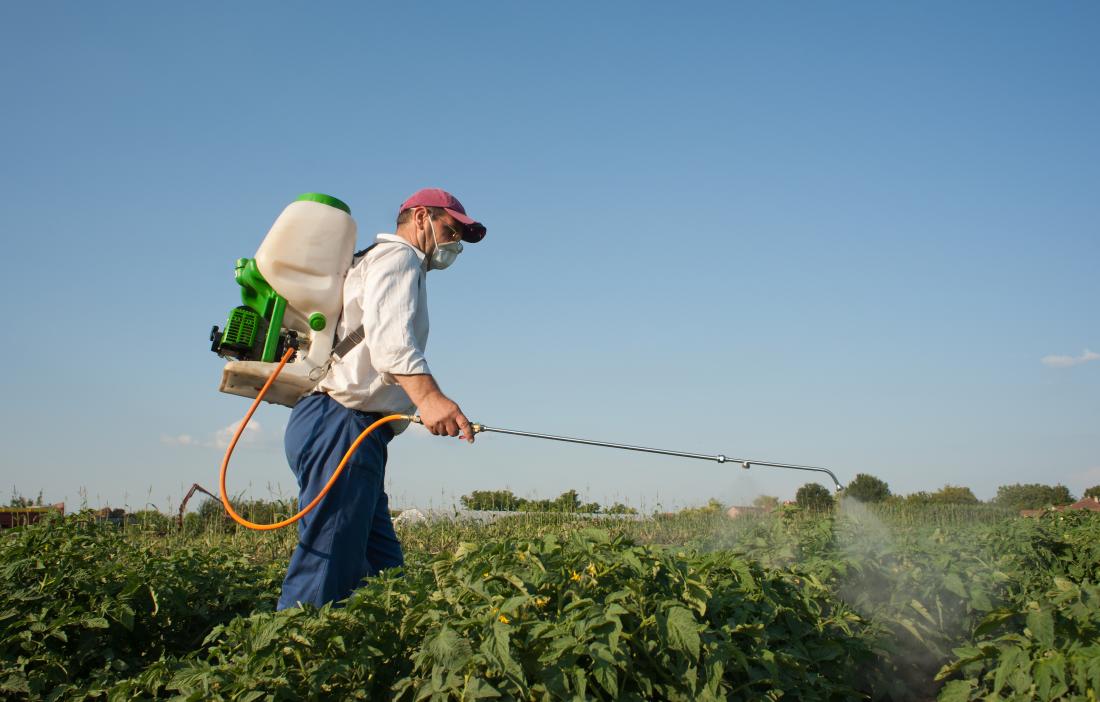According to the Environmental Protection Agency (EPA), the government body that regulates pesticides in the U.S., a pesticide is any substance or mixture of substances intended for preventing, destroying, repelling or mitigating any pest. Though often misunderstood to refer only to insecticides, the term pesticide also applies to herbicides, fungicides, and various other substances used to control pests. Pesticides also include plant regulators, defoliants and desiccants.
“Pesticide” is a general term which includes, but is not limited to: Insecticides, Herbicides, Fungicides, Miteicides, Aracnicides, Rodenticides and Molluscisides. Each of these is developed to target a specific type of living organism. For example insecticides target insects and herbicides target vegetation.
Are pesticides harmful to humans?
None of the pesticides are tested on humans. Every time you bite into produce, chances are you are part of the study that will determine whether or not pesticides will be used in the future. Pesticides are measured to see how toxic they are before they are approved for use in the garden or in agriculture on fruit and vegetable crops.
Toxicity is measured using a scale called “LD50”. Which is short for “Lethal Dose of 50 Percent of the Target Population”. Or in other words, how much product is required to kill half of the organisms that are exposed to it? LD50 is measured in mg/kg of body weight, so the lower the number, or the smaller the dose, the more toxic the substance is.
What is the target population used to test a pesticide’s toxicity?
If it’s an insecticide, it might be insects, like cockroaches or grass hoppers. If it’s an herbicide it might be purslane or field bindweed. In order to know what the toxicity is to humans, in the world of science, the closest thing to a human is a mouse, or a rat. Humans and rodents aren’t exactly the same, but we are both mammals.
How is the pesticide administered to the tests subjects?
LD50 can be measured in many ways, the most common are: oral, dermal and inhalant.
Oral is when pesticides are ingested by the test subject. Dermal is when a pesticide is applied to the test subject’s skin. Inhalant is when the pesticide is misted in the air and the test subject is allowed to breath in the particles. Each test will result in a different outcome. A pesticide might be more toxic ingested, for example, than if applied to the skin.
Most studies are done to find the “acute toxicity” of a pesticide. Acute toxicity is the short term exposure and usually tests an organism’s ability to metabolize or filter the toxins from its body. High concentrations of the pesticide are administered to an organism to test at what point its exposure to the pesticide is fatal.
But what if small doses of pesticides are administered over a long period of time? Long term affects of a pesticide administered to an organism is done to test “chronic toxicity”. Unfortunately there are only a few studies that demonstrate what the chronic affect of pesticides are after long term exposure to the chemicals.
Pesticides’ toxicity is relative
In conclusion, pesticides are toxic. They’re designed to kill pests. But toxicity is relative. Some pesticides are more toxic to some organisms than they are to others, pesticides are more or less toxic based on how an organism is exposed to it, and the concentration and the duration of the exposure will also change how it affects an organism.
Pesticides have very strict regulations and in order to be approved by the FDA, pesticides must be used according to the instructions on the label. If you grab a bottle of pesticide and read the label you will see that there are very detailed instructions on how to apply it, where to apply it, and at what concentration. The label will also give you safety instructions like how to protect your skin and eyes and what to do in case of an emergency.
When you use a pesticide according to the label you will find that the active ingredient is a small percentage of the overall concentration and the concentration is usually diluted further before it is applied. In addition to the low concentration, most pesticides are broken down by UV light. Long term exposure of the pesticide to the sun is the best way to ensure that a pesticides is less toxic to any organism that ingests it. That’s why one of the most important instructions on a pesticide label is the time that you should wait between the last application and the harvest.
Source: simplytreesut.blogspot.com

